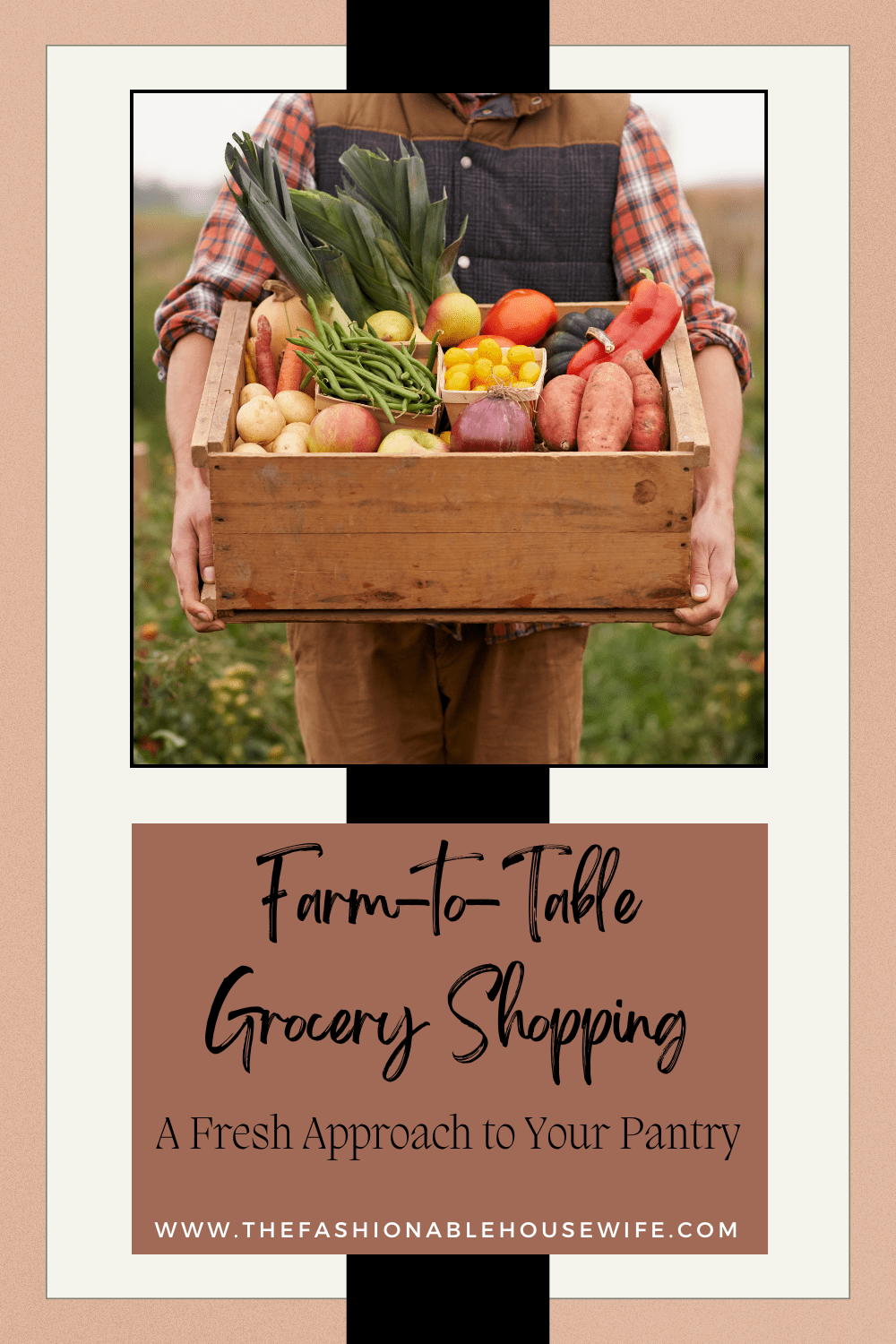Farm-to-Table Grocery Shopping: A Fresh Approach to Your Pantry

Key Takeaways
- Farm-to-table shopping delivers fresh, nutrient-rich food to your pantry.
- Economic support for local farmers fosters resilient communities.
- Cutting food miles has considerable environmental advantages.
- Seasonal eating enhances flavor and maximizes nutrition.
- Purchasing directly from farms opens up transparency and trust.
Table of Contents
- Introduction
- Fresher Produce, Enhanced Nutrition
- Boosting Local Economies
- Environmental Benefits
- Embracing Seasonal Eating
- Transparency and Trust
- Convenience Meets Sustainability
- Making the Switch
Farm-to-Table Grocery Shopping
The farm-to-table grocery movement is radically transforming how shoppers think about their food. By buying directly from local farms, you’re ensuring exceptional freshness and nutrition and playing an active role in reshaping community economies and promoting eco-friendly practices. Rather than just another trend, farm-to-table shopping represents a cultural shift, encouraging people to become more involved and knowledgeable about where their food comes from and how it is produced. Many consumers are making the shift, finding that it’s now easier than ever to access farm-fresh goods—often delivered right to your door through services and a supportive grocery store. Discover how this approach can elevate your daily meals, foster genuine connections with producers, and make a meaningful difference in your community.
Unlike conventional grocery chains, where produce may spend days or weeks in transit or storage, farm-to-table systems close the gap between harvest and table by offering direct connections between growers and consumers. This results in higher-quality fruits and vegetables, reduced food waste, and a more transparent food supply chain. Whether you pick up your veggies at a weekend farmers’ market or opt for a subscription box filled with surprises, farm-to-table shopping aligns your lifestyle with sustainability—and flavor. Supporting local agriculture means you’re investing in a system that values quality over convenience, ultimately delivering fresher food that tastes better and is often grown with greater attention to environmental impact.
Fresher Produce, Enhanced Nutrition
When you shop farm-to-table, you buy produce likely picked just hours before arriving at your door or the local market. Unlike goods that have traveled across continents or sat on store shelves, locally sourced fruits and vegetables reach you at their peak, before nutrients start to degrade. This short interval between harvest and consumption preserves vital antioxidants, vitamins, and minerals, boosting the health value of your groceries in a way industrial supply chains can’t match. Many fruits and vegetables lose nutritional potency during lengthy transportation and storage. By sourcing locally, you’re serving your family food at its freshest and most flavorful, supporting a nutrient-rich diet. The vibrancy and taste of freshly picked produce can also inspire more home-cooked meals and healthy choices.
Boosting Local Economies
Supporting local farmers has clear economic benefits that go beyond the farm. Money spent locally is more likely to stay in your community, creating jobs, boosting businesses, and strengthening economic resilience for everyone—from farm workers and delivery drivers to small-business owners and artisans. Local farms also support other industries, such as agricultural equipment suppliers, seed vendors, local restaurants, and food processors that depend on nearby harvests for their operations. This local purchasing multiplies the economic vitality of your region, building a strong foundation for future growth and providing stability during economic downturns. As these businesses succeed, they reinvest in the community by sponsoring events, supporting schools, and generating tax revenues that fund essential services.
Environmental Benefits
Eating locally means reducing food miles—the distance food travels from farm to plate—which curbs carbon emissions from transportation and refrigeration. Traditional food supply chains can stretch thousands of miles across the globe, racking up massive fuel consumption and emissions before products even reach their final destination. Farm-to-table shopping shortens this journey, significantly reducing your carbon footprint and directly contributing to the fight against climate change. Small-scale farmers often prioritize sustainable agricultural methods, which may favor crop rotation, reduced chemical use, organic farming, and regenerative techniques that restore soil health and biodiversity. By buying from these farmers, you’re helping to reduce reliance on industrial farming, increase pollinator habitats, and lower pollution runoff into local waterways.
Embracing Seasonal Eating
Purchasing from local farms inherently reconnects us with the natural cycles of the earth and the agricultural rhythms that have defined civilizations for centuries. Each season brings its unique variety—spring greens, summer berries, autumn squash, and winter root vegetables—encouraging dietary diversity and pushing cooks to experiment with new flavors and recipes. Seasonal eating not only tastes better but frequently means foods are more nutritious, as crops harvested in-season develop better flavor and nutrient profiles, ripening on the plant rather than artificially in storage. For many, this connection is a refreshing return to food traditions and a tangible way to foster food security, supporting a resilient local food system. Local, seasonal foods also allow you to enjoy fresher produce for less, as they aren’t subject to the high transportation and storage costs of off-season imports.
Transparency and Trust
When you buy directly from a farmer, you can ask questions about how your food is grown—what methods are used, where the crops are planted, and how animals are raised or crops are tended. This transparency builds trust and allows you to make choices aligning with your ethical, environmental, and health values, whether those prioritize organic practices, humane animal treatment, reduced pesticide use, or fair labor standards. Farmers’ markets, CSAs, and some grocers now offer direct lines of communication between producers and consumers, increasing confidence in your food supply and enabling you to see, hear, and even visit the sources of your meals. Over time, these relationships foster deeper connections between rural producers and urban eaters, helping bridge the gap between farm and city.

Convenience Meets Sustainability
Modern technology has made fresh, local food more accessible than ever before. Innovative platforms and urban farm delivery services have transformed the way people shop, making it easy to order a wide array of locally grown and raised products online for home delivery or convenient pickup. Even many traditional supermarkets now highlight dedicated sections for local producers, bridging the gap between convenience and sustainability. Mobile apps, online directories, and subscription boxes also provide flexible ways to keep your pantry stocked with seasonal produce, dairy, baked goods, and meats—without sacrificing ease or speed.
Making the Switch
Transitioning to a farm-to-table lifestyle is simple with a few intentional choices that gradually shift your purchasing habits. Start by visiting your nearby farmers’ market, where you can often meet the people who grow your food and receive expert advice on seasonal recipes and storage tips. Seek out a local CSA (Community Supported Agriculture), which allows you to subscribe to a weekly or bi-weekly box of freshly harvested goods and directly support farmers over the growing season. Look for grocers that clearly label local produce or partner with area farms, and don’t hesitate to ask where your food comes from. Online directories and mobile apps increasingly help consumers connect with farm-fresh suppliers in their region. Many shoppers find their diets becoming more adventurous and their cooking more inspired as they discover new varieties and seasonal offerings that aren’t available in traditional supermarkets. As you diversify your meals, you may also discover cost savings from reduced food waste and a greater appreciation for the value of fresh, high-quality food vs what you find in your grocery store.
As more consumers embrace farm-to-table grocery shopping, the movement invigorates communities, enhances personal health, and paves the way for sustainable agriculture. Being mindful about where your food comes from can make every meal an act of positive change while enjoying fresher and more flavorful food. With each purchase, you support a healthier environment, local economy, and the long-term future of real food.

